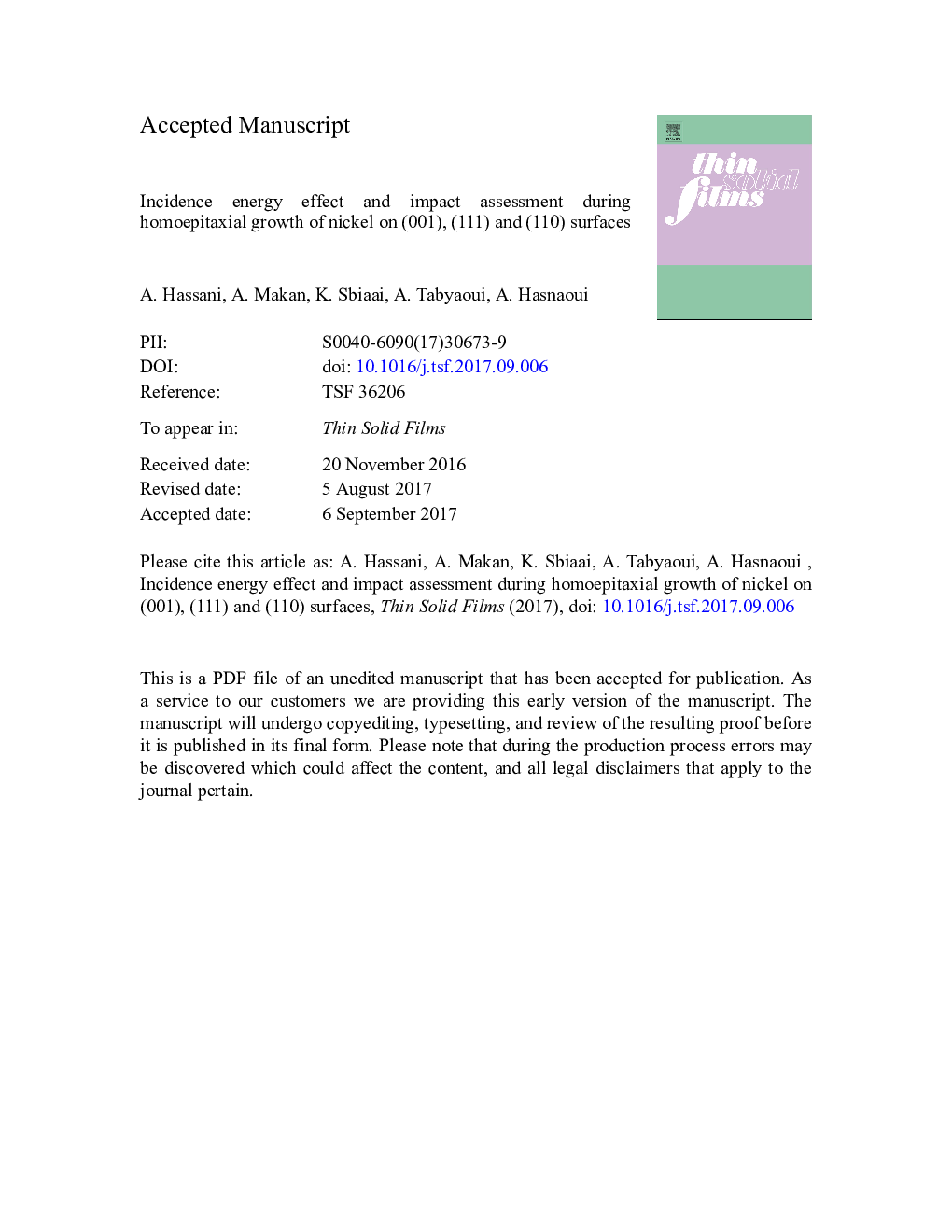| Article ID | Journal | Published Year | Pages | File Type |
|---|---|---|---|---|
| 5465776 | Thin Solid Films | 2017 | 30 Pages |
Abstract
In this work, we study homoepitaxial growth of Nickel on low-index (001), (110) and (111) Ni surfaces by means of molecular dynamics simulations based on the embedded atom method. The simulations are performed at 300Â K using gas precursors with incident energy of 2Â eV. The deposition of adatoms are done on (001), (110) and (111) surfaces. At low incidence energy, the film growth follows a Stranski-Karstanov mode at a critical film thickness. This aspect depends on the activation energy of the migration process, which affects the lateral diffusion on each surface. The high incidence energy of 2Â eV shows an effect on the film growth mode where the layers coverage rate increases compared to the low incidence energy for the three mentioned surfaces. Concerning the (111) surface, island coalescence is observed as a consequence of a collective atomic motion. The island geometric shape may be considered as dampers of the incidence energy, which block the exchange mechanism within the (111) surface, whereas in the case of the two other surfaces, the exchange mechanism remains eventual. The anisotropic shape of (110) surface is considered as an exceptional fact that can absorb incidence energy and then reproduces it horizontally, which can promote growth in lateral directions and form 2D islands.
Related Topics
Physical Sciences and Engineering
Materials Science
Nanotechnology
Authors
A. Hassani, A. Makan, K. Sbiaai, A. Tabyaoui, A. Hasnaoui,
